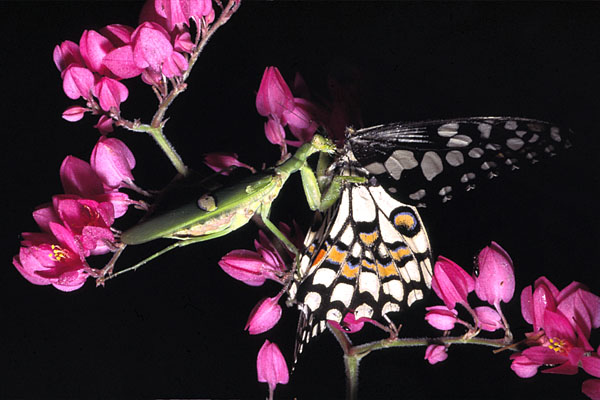Each member of the group that was with me, without exception, was stunned by the beauty of a butterfly fluttering near a cluster of flowers. Little did they realise that it was the helpless flutter of the butterfly in its last throes of life – a praying mantis had a stranglehold on the butterfly. They were all aghast when I drew their attention to it. Some of us watched the praying mantis get its meal while others watched dumbfounded the slow death of the butterfly. A while later, the wings of the butterfly floated in the air before it fell to the ground.

The praying mantis often referred to, as a “gin trap” is truly an amazing predator! This picture depicts just this ability of the praying mantis to catch prey larger than itself. And, for this purpose, it is very well equipped. If one takes a close look at the first pair of legs of a praying mantis, the spines on its legs become obvious. The spines on the two sides of the “knee” are complementary thereby making escape for the captured prey almost impossible. Besides, many species of praying mantis have colours that help them blend in with their surroundings. All this makes a praying mantis a formidable predator.
Some species of praying mantis commonly referred to as “flower mantis” have a stunning resemblance to the flowers amidst which they hide. They have protrusions on their body to give them their flower-like appearance. By doing so, they make a meal of the insects like bees and butterflies which visit flowers.
So the next time you manage to locate one of these little creatures pay attention to all the characters that make them perfectly adapted for a predatory life.